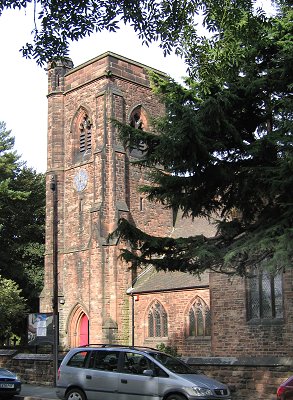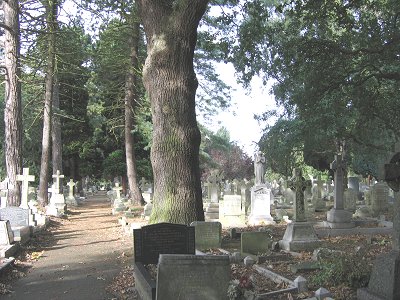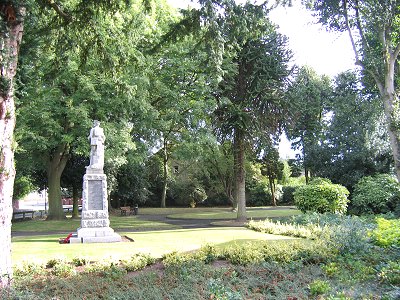|

Listing: 1858-9. By Griffin & Weller of Wolverhampton. A good example
of a mid-nineteenth century church, advanced in design.
Comment: Another example of a building in the western suburbs of
Wolverhampton that is difficult to photograph because of the trees around it.
 |
The church is accompanied by a vicarage, in typical brick
built style. The whole lot was built in what was then almost
undeveloped countryside (but now in the middle of suburbia),
presumably in anticipation of development. But it was many
decades before much development took place in the area. The
church seems mainly to have been built for the edification of
the first vicar, the Reverend Dalton, who was a star preacher
with a lot of money and an even richer wife. |
| In recent years the main body of the church was divided horizontally, with
worship taking place on the upper floor and community uses taking place on the
lower floor. The upper floor makes a decent church though it is now difficult to
see what the original space looked like. From the ground floor it is
impossible. There is an extensive graveyard at the west end of the church, with many
Victorian tombstones crowding together. None of them is
architecturally notable or very large. |
 |
Just opposite the church is this memorial garden originally
laid out for the first world war. The inscription on it reads: "This
Statue is erected as a lasting tribute to the men of Penn Fields Bradmore
and Merry Hill who served in His Majesty's Forces during the Great War,
1914-1919. The names of those who paid the supreme sacrifice are engraved
hereon." It is perhaps unusual for a memorial to pay tribute to those
who returned as well as those who did not.
In or about 2004 the city council restored the garden,
using black tarmac paths with concrete kerbs. Unexpectedly, this looks
very good.

|